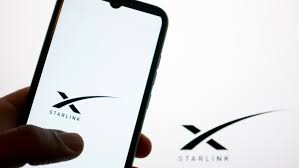
Breaking News
 Iran Regime Kills Protesters as Unrest and Calls for Regime Change Spread Nationwide
Iran Regime Kills Protesters as Unrest and Calls for Regime Change Spread Nationwide
 Trump, Treason, and the New York Times
Trump, Treason, and the New York Times
 Democrat idiocy at work in San Francisco
Democrat idiocy at work in San Francisco
 BREAKING THROUGH Tesla AI in 2026
BREAKING THROUGH Tesla AI in 2026
Top Tech News
 Laser weapons go mobile on US Army small vehicles
Laser weapons go mobile on US Army small vehicles
 EngineAI T800: Born to Disrupt! #EngineAI #robotics #newtechnology #newproduct
EngineAI T800: Born to Disrupt! #EngineAI #robotics #newtechnology #newproduct
 This Silicon Anode Breakthrough Could Mark A Turning Point For EV Batteries [Update]
This Silicon Anode Breakthrough Could Mark A Turning Point For EV Batteries [Update]
 Travel gadget promises to dry and iron your clothes – totally hands-free
Travel gadget promises to dry and iron your clothes – totally hands-free
 Perfect Aircrete, Kitchen Ingredients.
Perfect Aircrete, Kitchen Ingredients.
 Futuristic pixel-raising display lets you feel what's onscreen
Futuristic pixel-raising display lets you feel what's onscreen
 Cutting-Edge Facility Generates Pure Water and Hydrogen Fuel from Seawater for Mere Pennies
Cutting-Edge Facility Generates Pure Water and Hydrogen Fuel from Seawater for Mere Pennies
 This tiny dev board is packed with features for ambitious makers
This tiny dev board is packed with features for ambitious makers
 Scientists Discover Gel to Regrow Tooth Enamel
Scientists Discover Gel to Regrow Tooth Enamel
 Vitamin C and Dandelion Root Killing Cancer Cells -- as Former CDC Director Calls for COVID-19...
Vitamin C and Dandelion Root Killing Cancer Cells -- as Former CDC Director Calls for COVID-19...
FCC Allows SpaceX Starlink Direct to Cellphone Power for 4G/5G Speeds

It is unclear if the max speed requires any extra antenna on existing phones. Elon Musk has previously mentioned that direct to cellphone from satellite could have 10% of the speed of the broadband satellite service to Starlink dishes. Elon obviously knew about the power and spectrum increases that are happening.
500 Starlink satellites have direct to cell service. The FCC permit allows up to 7500 Starlink satellites to use direct to cell at higher power levels.
Starlink has agreements with 8 mobile network operators (MNOs) globally, representing approximately 261 million subscribers, though this reflects potential reach rather than active users. Starlink has partnered with several mobile carriers worldwide for its Direct to Cell service. Confirmed partners include T-Mobile (U.S.), Rogers (Canada), One NZ (New Zealand), Optus (Australia), KDDI (Japan), Salt (Switzerland), and Entel (Chile and Peru). The trial period include other companies and there are talks of discussions with apple.
Texting: Fully operational in beta now (March 2025), with commercial rollout expected by mid-2025 (e.g., T-Mobile plans to end the free beta in July 2025).
Voice and Data: SpaceX aims to introduce voice and data services in 2025, with specific rollout depending on regulatory approval and satellite deployment. T-Mobile's roadmap indicates these features will follow the texting phase, likely starting in mid-to-late 2025 after the beta concludes. Partners Rogers and Optus have echoed this timeline, targeting voice and data in 2025 as well.
FCC has authorized a 770% increase in power. Power flux density at -110.6 decibels per meter square per megahertz. Before it was -120 decibels per meter square per megahertz
Starlink is not yet offering internet and voice but they will and it will be at far faster speeds.
The new Starlink satellites will be at lower altitudes (300 kilometers) which will also improve latency and communication speeds.



